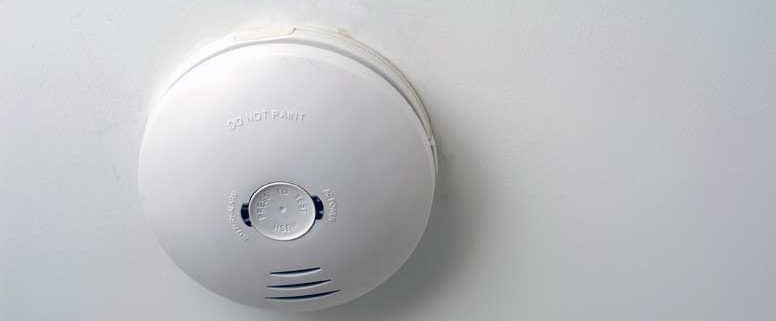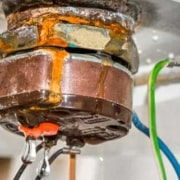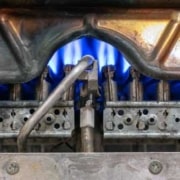7 Basic Life-Saving Smoke Alarm Tips
If you’ve ever been involved in a home or commercial building fire, you’ll most likely agree that smoke alarms play a vital role in the safety of a building’s occupants. According to the National Fire Protection Association (NFPA), about three out of every five fire deaths happen in homes with no smoke alarms or the alarms aren’t working. According to a recent study, the death rate was more than twice as high in homes that did not have any functioning smoke alarms versus the death rate in homes with working smoke alarms.
Although most people would agree that smoke detectors are important life-saving devices, many people don’t follow the basic guidelines for installation and maintenance of smoke alarms. That’s why we’ve come up with a list of the Top 7 Basic Life-Saving Smoke Alarm Tips. Although many of these tips seem obvious and simple to do, many of us forget to follow them.
1. Change the smoke alarm batteries once a year; test the alarm once a month.
If you have a hardwired (with battery backup) or battery-only smoke detector, you need to change the battery once a year. Seems simple, right? Many people easily forget. One way to remember is to do it every time you change your clock in the spring or fall. If you ever hear a chirping sound, change the battery right away. You can also mark it on a calendar or put an alert in your smart phone.
Also, make sure to test the alarm every month by pushing the “test” button, so you know it’s working.
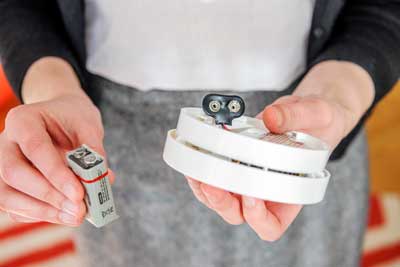
2. Install smoke alarms in every sleeping room.
Having a sufficient number of smoke alarms throughout your home is crucial to maximize the amount of escape time. The NFPA recommends every bedroom have its own alarm; smoke alarms should also be installed outside each sleeping area and on every level of the home.
If there aren’t any bedrooms on a floor, such as a basement, install a smoke alarm in a family room, living room or den, or near the stairway to the upper level. Large homes may need extra alarms.
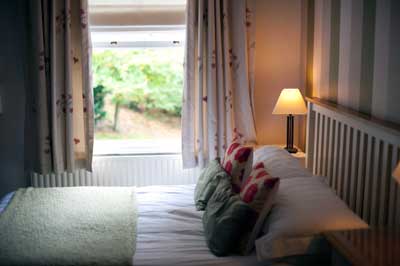
3. Replace smoke alarms when they are 10 years old.
Replacing a smoke detector once it has reached its life expectancy is easy to forget to do. If you’re not sure how old your smoke alarms are, look on the back for the manufacturer date. If you can’t find the date and it seems a while since you installed them, replace the alarms.
4. Use both types of smoke alarms—ionization and photoelectric—throughout the home.
Ionization alarms are quicker to warn about flaming fires while photoelectric smoke alarms are more responsive to smoldering fires.
IEI fire protection experts recommend placing each type of alarm where they would be most effective. “Given that most victims in residential fires die or are injured from smoke inhalation, it makes more sense to install mostly photoelectric smoke alarms,” says Bill Ivey, IEI principal consultant.
To ensure the most effective coverage with both types of alarms, hire a qualified contractor to do the installation. Although more expensive, you can also purchase a dual sensor (combination ionization/photoelectric) alarm for coverage against either fire.
5. Use a special smoke alarm for the hearing impaired.
If anyone in your family is hard or hearing or deaf, you can purchase a special smoke alarm that produces a strobe light. (Most major smoke alarm companies offer alarms with strobe lights). Typically, a special vibration notification appliance, such as a pillow or bed shaker, is activated by the smoke alarm.
6. Use interconnected smoke alarms.
For the best type of protection, use interconnected smoke detectors. This means when one alarm sounds, they all sound. You can interconnect them by hardwiring them or using wireless technology.
When you use interconnected smoke alarms, make sure you use ones from the same manufacturer. If they aren’t compatible, they may not all sound.
7. Install smoke alarms either on the ceiling or high on a wall.
Remember, smoke rises. Therefore, it makes sense to have your smoke alarms on the ceiling. If you must install them on the wall, the NFPA recommends smoke alarms be installed no more than 12 inches away from the ceiling. For pitched ceilings, install the alarm no more than three feet from the peak, but not within the apex (four inches down from the peak).
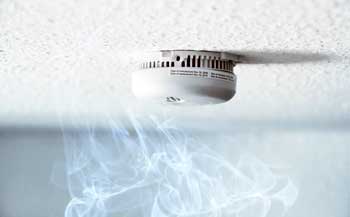
When it comes to installing smoke alarms, Ivey suggests it’s best to use professional services to install them. “You are dealing with a fire-protection device that could ultimately save a person’s life, ” he says.
Hopefully this list of tips will help you be more proactive in the maintenance and correct installation of your home’s smoke detectors. By keeping the devices in proper working condition, you are making your home and family safer from fire.
In addition to following the above suggestions on smoke alarm installation and maintenance, it might be smart to read these tips on how to prevent a home or building fire.
And finally, if you ever need a fire suppression expert, remember Ivey Engineering.

